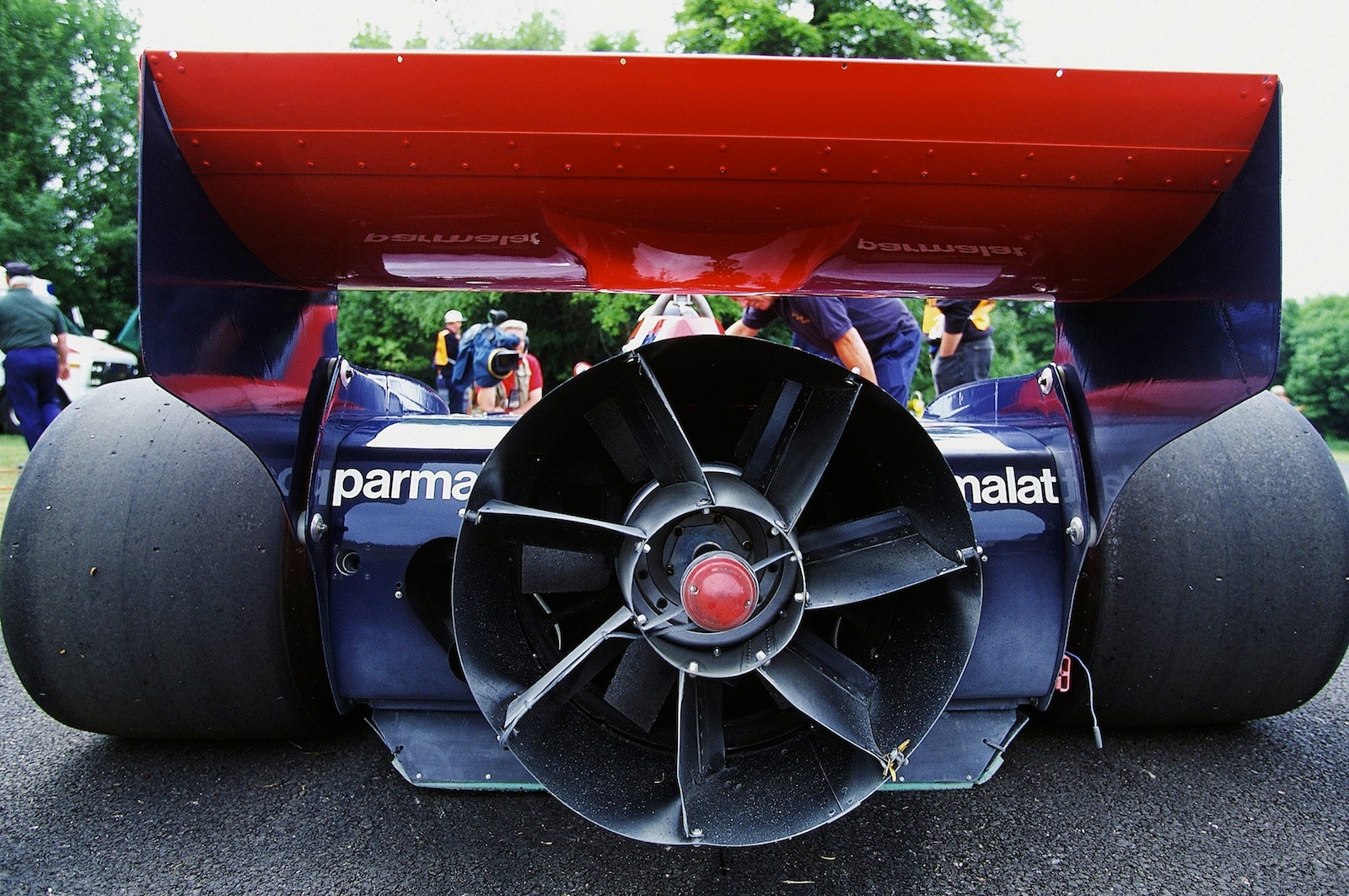 "Roberto G." (roberto-g)
"Roberto G." (roberto-g)
02/22/2014 at 17:28 • Filed to: BRABHAM-ALFA BT46
 5
5
 8
8
 "Roberto G." (roberto-g)
"Roberto G." (roberto-g)
02/22/2014 at 17:28 • Filed to: BRABHAM-ALFA BT46 |  5 5
|  8 8 |

Excerpt from !!!error: Indecipherable SUB-paragraph formatting!!! :
The new Brabham appeared to be very quick at the beginning of the (1978) season, but also had some flaws. Even though this was a masterpiece, it still couldn't keep up with the new Lotus. Collin Chapman had fitted his Lotus with ground effect, meaning they were quite literally stuck to the ground. Gordon Murray needed to find an answer to this, as the Lotuses were much faster through corners.
The Brit and Carlo Chiti started thinking about what could be done to solve this issue. A lot, as it turned out, as this engine had power to spare and could actually do with a bit less. Murray thought of a system in which a cooler was fitted on top of the engine. But this one needed extra cooling as well, which is why an extra ventilator was positioned at the back of the car. This meant a better balance for the vehicle as the cooling from the front wing was now transferred to the rear, and the ventilator in the back meant more downforce (it kind of sucked the car to the road).
First tests didn't go well, as the rear fan kept on breaking because of the high revs. A special and enclosed magnesium fan was made and mounted to the rear of the car. Calculations were made, and the engineers of Brabham couldn't believe what they saw. Even though the ventilator had cost 20 hp, the car still had sufficient power, but now an added 500 kilos of downforce. This was now an incredibly quick vehicle with lots of grip and an impressive stability, even at really low revs. Just like with modern aerodynamic F1 cars, the drivers needed to keep the throttle pinned down in order to create downforce. It was a new way of driving.
The new Brabham BT46B was used in the Grand Prix of Sweden in Anderstorp for the first time, and Gordon Murray had it driving its qualification laps with filled up tanks, so that other teams wouldn't yet see how quick it was. Once the race had started, though, Niki Lauda was very fast and, for the first time that season, able to keep up with Andretti's Lotus. The latter had to fight for his position and eventually made a mistake; Lauda took his chance and easily won the race. But other teams started protesting afterwards, and Mario Andretti (imposed by Colin Chapman) claimed that the car was intolerably dangerous as it sucked up a lot of stone chippings at the front, but spit them out at the rear, making driving behind the car quite difficult and dangerous indeed. Bernie Ecclestone had no choice but to withdraw the car at the end of this Grand Prix, at the dismay of Murray. Niki Lauda won one more race with the regular Brabham that season; the one in Monza. The team became third that season with 53 points, a good result.
 JACU - I've got bonifides.
> Roberto G.
JACU - I've got bonifides.
> Roberto G.
02/22/2014 at 10:30 |
|
I've always been a big fan of this car.
 puddler
> Roberto G.
puddler
> Roberto G.
02/22/2014 at 10:40 |
|
this car sucks.
but in reality, i'd like all of you to know that suck is an imaginary force. so, really this car lowers the airpressure underneath itself...
 YSI-what can brown do for you
> Roberto G.
YSI-what can brown do for you
> Roberto G.
02/22/2014 at 17:41 |
|
The sound this car makes is FANtastic.
 JACU - I've got bonifides.
> puddler
JACU - I've got bonifides.
> puddler
02/22/2014 at 17:44 |
|
"... suck is an imaginary force."
That's what she said! (unfortunately)
 Jeff-God-of-Biscuits
> Roberto G.
Jeff-God-of-Biscuits
> Roberto G.
02/22/2014 at 18:11 |
|
Apparently, the chapparel sucker car generated enough suction that it could have driven upside down.
 tromoly
> Roberto G.
tromoly
> Roberto G.
02/22/2014 at 20:17 |
|
Active Aero. That's what outlawed the car.
 Destructive Tester
> Roberto G.
Destructive Tester
> Roberto G.
02/22/2014 at 23:18 |
|
Not to interrupt the fan/suck puns, but whatever you do don't say this was a good idea. Keep in mind, this was the idea that made Bernie think he was capable of good ideas. Now he's down to double points, sprinklers, and medals...
 puddler
> JACU - I've got bonifides.
puddler
> JACU - I've got bonifides.
02/23/2014 at 10:41 |
|
she's never said that to me.